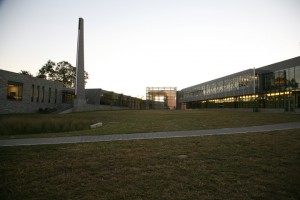
While lawmakers, environmentalists and energy industry representatives await the fate of Indian Point, Westchester County property owners have started to tackle rising energy costs head-on.
Regardless of whether Indian Point”™s two nuclear generators are relicensed by the U.S. Nuclear Regulatory Commission in 2013 and 2015, Franz Litz, director of the Pace Energy and Climate Center at Pace Law School, says the only true “win-win option” is to incorporate energy-efficiency technology into buildings.
“The only option that has no impact or a positive impact is energy efficiency, where you can make it so that you need less power and you don”™t have to pay for the extra plant,” Litz said.
Property owners can reasonably see a 10 percent to 25 percent annual reduction in energy costs for renovations done on existing buildings and even higher cost savings on new buildings, said Jim Dolan, principal in charge of the energy and commissioning group at the Hawthorne engineering firm O”™Dea Lynch Abbattista.
The costs associated with such renovations or construction projects typically run higher than they would otherwise but can pay for themselves over a five- to 10-year period, Dolan said.
“The trend that we”™re seeing is business owners really looking more closely at their utility bills and trying to find ways to reduce their energy consumption,” Dolan said.
While O”™Dea Lynch Abbattista has worked on a number of projects in Westchester that top 20,000 square feet, Dolan said it also works with a range of smaller businesses and organizations ”“ from libraries to municipalities to churches ”“ to pinpoint upgrades that can result in energy savings.
Two common solutions he recommends to property owners are to update lighting fixtures and switches and to update business-management systems ”“ changes he said can often be made by a business”™s own staff.
Last year, Westchester Community College opened its LEED-Gold certified 70,000-square-foot Gateway Center on the Valhalla campus. The building, barely a year old, is already saving the college, said Kevin Garvey, director of physical plant, campus services and security there.
“The way that the equipment is designed now ”¦ to get the same horsepower out of this equipment takes less energy now than it did 10, 20, 30 years ago,” Garvey said.
He said technological innovation in heating, ventilation and air-conditioning equipment, lighting systems and even in glass-making all contributes to the building”™s energy savings, which are roughly 30 percent compared to a similarly-sized building.



















